You might be aware that Vienna has been rated the number one city globally on the Global Livability Index for several consecutive years. Impressive, right? And there’s a reason for that. This blog post will explore some of the incredible experiences and hidden treasures that Vienna has to offer. Keep reading to discover how to spend a day exploring Vienna.
I’ll begin with a somewhat controversial opinion – Vienna is way better during summer! When most people think of Vienna, they imagine the Christmas markets and mulled wine in December. Don’t get me wrong; I too savour a cup of mulled wine while strolling through the Christmas markets…however, the long sunny days in summer offer an unparalleled experience. There’s simply a broader range of activities: from beach trips at the Danube River to wine tasting at a hilltop vineyard. Let’s take a sneak peek at what a summer day in Vienna entails.
Cafe Drechsler, once associated with end-of-night drinks, has recently been refurbished into a quaint breakfast hotspot. You’ll be nestled in a classic Viennese café environment. Conveniently situated directly across from Naschmarkt, it’s perfect for a post-breakfast stroll through the market lanes. You can often enjoy live music during weekends, which provides the perfect backdrop for morning chats. The quality of the food is simply top-notch. You can’t go wrong with any choice, so ensure to visit this place when in Vienna.
Other cool breakfast spots include Hildebrandt Cafe, Stilbruch, Das Augustin, Cafe Telegraph, and Ulrich.
There’s an abundance of sightseeing to do by merely wandering around Vienna’s historic centre. Your first stop should be the Museums Quartier, which houses several museums (such as Leopold, mumok, and Kunsthalle). The spacious open square at the centre frequently hosts events during the summer months. It’s a great spot not only for the museums but also for outdoor hangouts and grabbing a drink. What’s more, entry is entirely free. Close attractions not to miss include the Hofburg Palace and gardens, Rathausplatz, and the Opera. They’re all conveniently located, so be sure to stop by and explore. From there, simply take one of the narrow streets behind the opera and lose yourself in the old city.
Located across the river, Augarten is worth a visit, especially if you’re seeking some shade from the sun. Vienna is bike-friendly, so consider renting a bike for the day. There are two cool things about this area – 1) Monte Ofelio, a charming café right across the street, and 2) an open-air movie theatre in the evenings. The park is also great for picnics.
Situated on a small island in the Danube, this park is the perfect summer escape. You can swim or paddleboard, relax in the park, or grab a bite. There are also several spots around Donauinsel Island where you can barbecue and picnic. So, if you want to immerse yourself in the local weekend culture, join the grilling festivities here.
A must-visit on my list is Nussberg Vineyards. Did you know that Vienna is the only global metropolis with sizable vineyards within city limits? Nussberg is not far from the city centre, and I assure you, it’s worth visiting. You can stroll around the vineyards and savour the breathtaking panoramic city views. The vineyards also serve light meals with the tables set amid the vines. It’s an absolute must, especially at sunset.
Take a stroll on Wahringer Strasse, dotted with small, independent cafés and bakeries. This district is not a typical tourist destination, making it an excellent spot to soak in authentic Vienna vibes. Visit Auman Platz, a cosy small garden with a café. It’s a fantastic spot to enjoy an Aperol spritz outdoors. Another local weekend favourite is Kutschkermarkt farmers’ market. The Himmelblau coffee spot nearby is also worth a visit. If you fancy a walk, head to Turkenschanz Park. En route, you’ll pass village-like houses on hilly streets, typical of this part of the city. The 18th district is an excellent location for accommodation since it’s well connected and not in the crowded tourist area.
Located next to the Museums Quartier is the 25hours hotel. Inside, take the elevator to the top floor where you’ll find a chic rooftop bar with an open terrace. The panoramic city views are stunning as you’re right in the city centre. Be wary because when the weather is nice it can get quite crowded so make sure to book a table or go there slightly earlier.
Where would you start?
There is probably not enough time and space to describe all the things Barcelona offers in one single blog post but we’ll give it a shot. As someone who lived there – let me tell you, the city unveils itself day after day and even if you think you saw everything, there is a big chance you’re missing a few things. I know that was the case for me.
In this article we’ll give you some tips and starting points for your adventure. So let’s dive in.
This is probably one of the most important things to be considered when choosing an accommodation for your stay. Barcelona is a large city and often the neighborhoods offer completely different vibes. Do you want to be closer to the beaches and the buzzing nightlife or do you prefer the quieter hill side of the city? Do you prefer the setting of the old town or do you want to be in a more modern part? These criteria will greatly affect your accommodation choice.
Those are the six districts in Barcelona that are perfect for city exploration : The Ciutat Vella, Eixample, Sant Marti, Gracia, Les Corts and Sants–Montjuic.
This area comprises four smaller ones. The ancient Barri Gotic (Gothic Quarter), El Raval, La Barceloneta, and the Barri de la Ribera, which includes El Born District.
Each neighborhood has a distinct character within this compact area. The Barri Gotic features narrow alleys, filled with antique shops, historical cafes, and tourist-attracting restaurants, while El Raval exudes a laid-back, eclectic vibe, teeming with students and skateboarders. El Born strikes a balance between tourist-friendly features and local authenticity, and La Barceloneta, a quaint former fishing district, is now transformed into a hip beach neighbourhood.
If you like the narrow streets, old beautiful buildings with tiny stairs and preserved architecture from hundreds of years ago – then this is the place for you. Keep in mind though that this is the busiest area of the city and it can get quite crowded especially in the warmer months. Make sure that your accommodation is on a higher floor so it’s not too noisy.
With the city’s expansion from the industrial revolution and the Old Town walls closing in, Barcelona’s officials tasked Ildefons Cerda with planning Barcelona’s future. The result was L’Eixample district, a grid-like section of the city interspersed with diagonal avenues and parks, showcasing the prevalent Modernista architecture.
The district is often divided into Eixample Left, south of Passeig de Gracia, and Eixample Right, north of Passeig de Gracia, which houses La Sagrada Familia. With its distinct architecture and fewer tourists, the district, primarily comprising apartment blocks (and naturally, an array of bars and restaurants), represents the ‘real Barcelona’ to many locals.
Adjacent to the north-western part of Eixample is Saint Marti. Formerly a separate village, Sant Marti was incorporated into Barcelona through Ildefons Cerda’s design, extending the grid-like pattern across this broad area from Port Olimpic to Park Forum. The district, also known as Poblenou, is among Barcelona’s most intriguing. It was the industrial heartland of Catalonia full with factories and warehouse buildings. Now it’s home to modern parks, futuristic office blocks, converted industrial nightclubs, and an extensive coastline of beaches. It’s also considered to be the new business hub of Barcelona with many coworking spaces, uni campuses and office buildings popping up.
It is definitely less touristy than other parts of the city and while it’s starting to get more and more urbanized it still has a beach, laid-back vibe to it.
Gracia on the northern part of the city, similar to Sant Marti, was formerly an independent town outside Barcelona. Even now, it retains a unique, village-like tranquility compared to the bustling city center. Yet, its narrow alleyways and open squares are full of activity, hosting countless small bars and chic restaurants that appeal to the young adults and families that are drawn to live here. Gracia is also where you’ll find Gaudi’s Parc Guell. The Sarria-Sant Gervasi area it’s very similar to Gracia.
Keep in mind that this area is not that close to the city center and you’ll need to jump on the public transport.
Les Corts, often overlooked in favor of more centrally located neighborhoods, has a unique charm of its own. Les Corts has managed to retain a distinct, almost suburban atmosphere despite being incorporated into Barcelona. The neighborhood is characterized by its laid-back ambiance and spacious, tree-lined streets. However, it is far from being sleepy. The area is home to a dynamic mix of trendy coffee shops, traditional Catalan restaurants, and local boutiques.
Contrasting with the city’s bustling center, Sants-Montjuic offers both an urban and natural retreat with its vibrant local life and expansive green spaces.At the heart of the neighborhood, you’ll find Montjuic Park, a beautiful haven of gardens, museums, and historic sites, including the Montjuic Castle, which offers stunning city views. Also prominent is the Plaza Espanya, a bustling hub that leads to the impressive Magic Fountain and the MNAC (Catalan National Art Museum).
This is the fastest neighborhood to reach from the airport and it’s very conveniently connected to the more central parts of the city.
This will depend very much on what you want to do while you’re in the city. Typically the high season is from May to September. The weather during that time is perfect for beach activities. However, Barcelona gets extremely crowded during this time, so if you don’t like this it’s better to skip this season.
If you still want to enjoy the good weather and all the outside activities I personally recommend visiting in either April, September or October. It’s still very warm and you can enjoy a beach day but it’s also perfect for long walks because it’s not extremely hot.
Even in months like February and March you can be lucky and have warmer, sunny days, so there is ultimately no wrong choice.
We all know the most popular must see spots like the Sagrada Familia, La Rambla, Park Guell etc. They’re for sure not to miss but we’ll try to keep this list only for non traditional activities and places. Whatever you choose just make sure to leave a day in your program when you just wander around the city without any agenda. This is how I discovered some of the best spots.


When you think of Barcelona you might automatically think of paella : however the dish actually originates from the area of Valencia. That’s not to say that there are no good spots in Barcelona but you might want to take a trip to Valencia for a really really good one.
Instead here are some more typical dishes and snacks you can enjoy in Barcelona
Note : none of the locals drink Sangria (don’t know where this idea came from), so you can happily skip that one and have cava instead.
Honestly one of the best things you can do is to find a random bar on the streets filled with locals and just grab a glass of cava and enjoy!
That’s it! Hope you enjoyed this mini Barcelona guide.
Europe is an exquisite tapestry of history, culture, and stunning landscapes. Whilst cities like London and Paris tend to take centre stage, there are countless other destinations promising exhilarating experiences for the adventurous traveller. This summer, take the road less travelled and explore some of Europe’s lesser-known gems. Below, we propose 5 trip itineraries, each a two-week adventure that features 2-3 destinations.

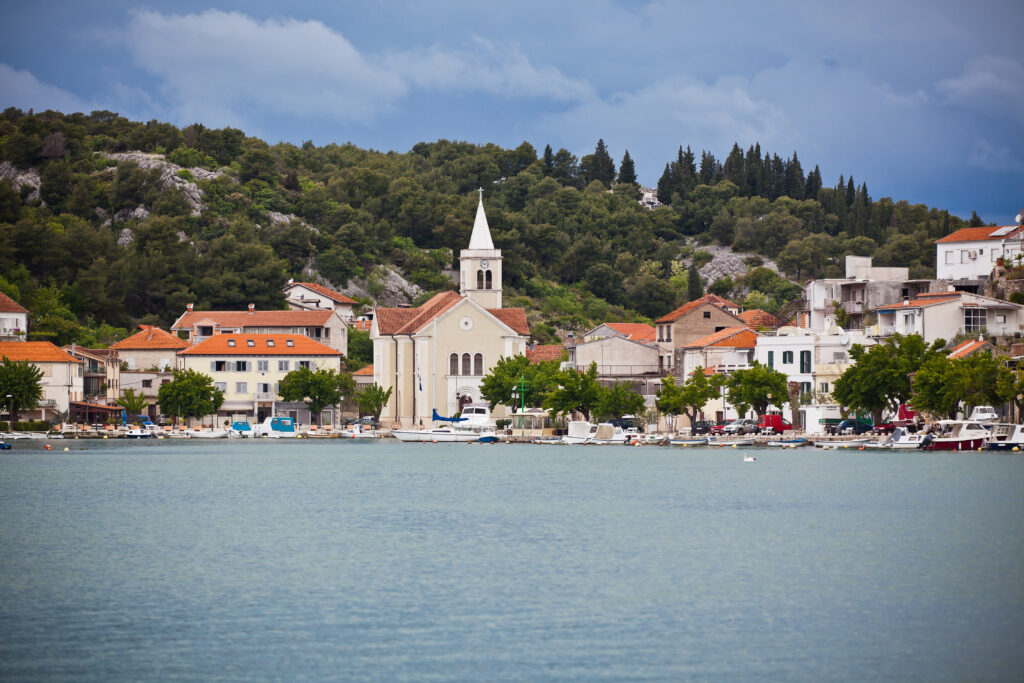

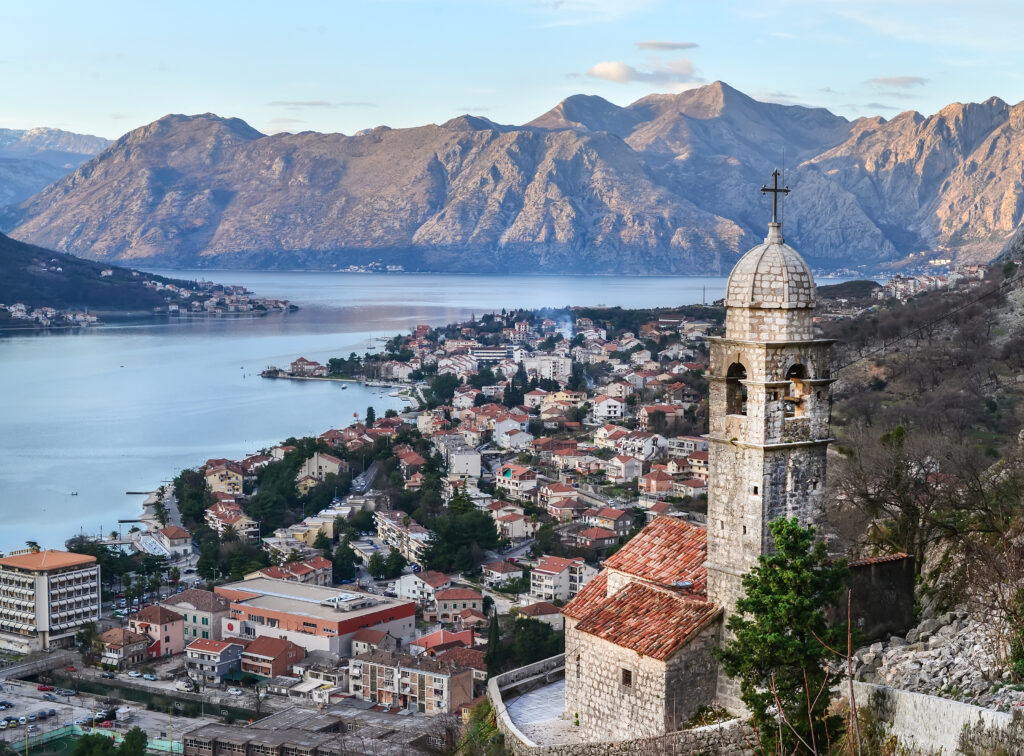

These itineraries offer a refreshing perspective on European travel, veering away from the usual tourist trails. By exploring these less-frequented destinations, you can discover Europe’s many hidden treasures, and create your own unforgettable summer getaway. Happy travelling!
In part one we discovered some adventurous activities throughout Europe for couples. Now let’s dig in part two and see what Latin America has to offer. This diverse continent, rich in culture and brimming with natural beauty, offers a wealth of adrenaline-pumping activities. From glacier trekking in Argentina to scuba diving in Mexico’s underwater caves, here are some unforgettable travel experiences for adventurous couples in Latin America.
Patagonia, a region shared by Argentina and Chile, is known for its stunning landscapes, including some of the world’s most beautiful glaciers. A trek on the Perito Moreno Glacier is an unforgettable experience, allowing you to explore the intricate formations of this icy terrain.

Mexico’s Yucatan Peninsula is home to numerous cenotes – natural sinkholes or wells filled with water. These cenotes offer a unique scuba diving experience, as you explore the beautiful underwater structures and marine life.

San Gil, known as Colombia’s adventure capital, offers a plethora of thrilling activities, including white-water rafting. The Fonce and Chicamocha rivers provide exciting rapids that promise a fun and exhilarating rafting experience.
Drifting above the colorful colonial city of Guanajuato in a hot air balloon combines thrilling heights with breathtaking views. It’s a unique and romantic way for adventurous couples to experience this UNESCO World Heritage site.

For hiking enthusiasts, the W Circuit in Torres del Paine National Park offers a challenging multi-day hike with stunning views of glaciers, granite towers, and crystal-clear lakes.
The Andes in Colombia provide a rugged and beautiful setting for mountain biking. With trails that offer a combination of challenging climbs and fast descents, it’s an exhilarating way to explore the landscapes.
Florianopolis is a surfer’s paradise, with over 40 beaches and consistent waves throughout the year. It’s a fantastic destination for couples who wish to catch some waves together.
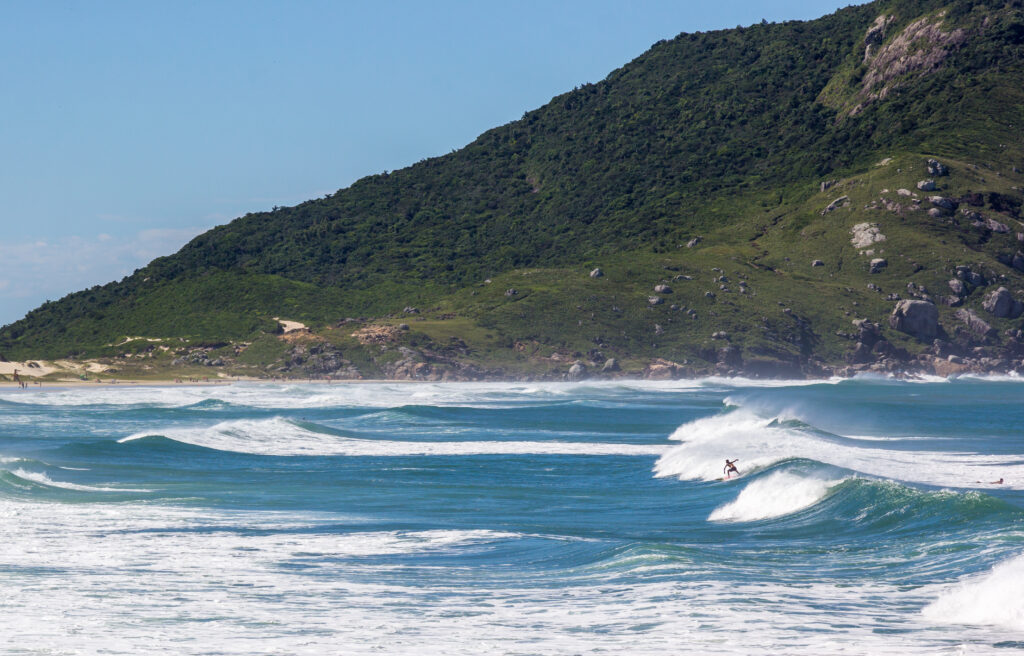
Chapada Diamantina National Park is known for its waterfalls, caves, and hiking trails. One of the most exciting ways to explore the park is by canyoning – a thrilling combination of swimming, climbing, and cliff jumping.
Valle de Bravo is a top paragliding destination, offering stunning views of the lake and forested mountains below. Soaring through the skies is a thrilling experience for any adventurous couple.
An expedition in the Amazon Jungle is a must for any adventurous couple. Whether it’s trekking through the dense rainforest, canoeing along the tributaries, or spotting exotic wildlife, the Amazon offers a unique and unforgettable adventure.
From the glaciers of Patagonia to the Amazon Rainforest, Latin America is full of exciting adventures for couples. These shared experiences not only provide a thrilling adrenaline rush but also create unforgettable memories that will deepen your bond. Pack your bags and let the spirit of adventure guide your journey!
Adventure-seeking couples are always in search of thrilling activities to enjoy together. Traveling offers both the adrenaline rush and the opportunity to experience new cultures and landscapes. Europe, in particular, is a place brimming with exciting adventures waiting to be discovered. From skydiving in Switzerland to kitesurfing in Spain, this list comprises some of the best travel ideas for adventurous couples in Europe.
Switzerland, renowned for its breathtaking mountainous landscapes, provides a spectacular backdrop for a thrilling skydiving experience. Interlaken, nestled in the heart of the Swiss Alps, offers one of the most scenic skydiving experiences for couples who aren’t afraid of heights.
The Tara River Canyon, Europe’s deepest gorge and a UNESCO World Heritage site, offers adventurous couples an exhilarating white-water rafting experience. The river’s rapids cater to both beginners and experienced rafters, promising an exciting adventure for all.
A hot air balloon ride over the picturesque “fairy chimney” rock formations of Cappadocia is a must-do for any adventurous couple. This mesmerizing experience at sunrise combines thrill, romance, and stunning panoramic views.
Embark on a challenging but rewarding hike on the Tour du Mont Blanc, one of Europe’s most popular long-distance hiking routes. Spanning three countries, the trail provides breathtaking views of glaciers, clear alpine lakes, and the majestic Mont Blanc.
For couples who enjoy mountain biking, the Sierra Nevada mountains in Spain are a paradise. The region offers numerous bike trails ranging from scenic rides through hillside villages to challenging ascents up rugged mountain paths.
Kalymnos, a world-class rock-climbing destination, attracts climbers with its stunning limestone cliffs and warm Mediterranean sun. There are routes to suit all levels, making it an ideal spot for couples seeking an adventurous climb.
Underneath Malta’s clear blue waters lies a variety of sea life, dramatic underwater landscapes, and sunken wrecks. The Blue Hole in Gozo island is one of these underwater gems, offering divers a unique underwater experience.
Venturing to Lapland, Finland, during the winter months opens the opportunity for a unique adventure: dog sledding. Journeying through the snowy landscapes under the northern lights is a magical experience available only in the frosty north.
Tarifa is a popular hub for kitesurfing enthusiasts, thanks to its consistent winds and long, sandy beaches. These conditions make it perfect for this exciting water sport.
Canyoning in the Verdon Gorge, or the ‘Grand Canyon of Europe’, promises an intense and exciting adventure. This activity combines walking, swimming, climbing, and abseiling, allowing couples to challenge themselves and explore the stunning gorge.
For the winter sports enthusiasts, ice climbing in Rjukan, Norway, is a must-try. This location is known for its reliable winter conditions and a plethora of waterfall ice climbs suitable for various skill levels.
Europe is rich in diverse landscapes and climatic conditions, providing a playground for all kinds of adventures. Whether you prefer leaping out of a plane over Alpine peaks or exploring the underwater world of the Mediterranean, you’ll find a thrilling adventure in Europe perfect for you and your partner. So, pack your bags and let your shared passion for adventure guide you towards your next unforgettable experience!
Euro summer is not complete without going to a music festival. And let us tell you : there is a lot to choose from. From the famous Glastonbury (which let’s face it, it’s not always everyone’s favorite) to more unknown festivals like EXIT in Serbia. Each of them has its unique vibe, set of performances, and cultural experiences, making them must-visit events in 2024. Here’s your guide to the top music festivals in Europe for Summer 2024, complete with dates, locations, and what makes each of them stand out.
Glastonbury is more than a music festival; it’s a cultural phenomenon. Known for its rich history and eclectic mix of music, Glastonbury is an absolute bucket list event. The festival site turns into a vast city of performances with something for every music taste. From legendary headliners on the Pyramid Stage to emerging artists in intimate settings, Glastonbury promises unforgettable experiences. Line up for this year’s festival include Dua Lipa, Coldplay and SZA.
Tomorrowland is the world’s largest electronic music festival that transforms the town of Boom into a fairy-tale kingdom for two weekends of madness. With attendees from all over the globe, it’s a melting pot of cultures united by music. Expect incredible stage designs, an unbeatable atmosphere, and a lineup that features the biggest DJs in the world.
Primavera Sound has established itself as a pilgrimage for indie and alternative music fans. Located in the scenic parc del Fòrum on the Barcelona seafront, the festival is known for its diverse lineup, spanning from rock to pop to electronic. Primavera Sound is the place to be for those who seek to discover new music trends and sounds.
The Great Escape is the festival for new music, showcasing over 400 up-and-coming artists from all over the world in various venues across Brighton. It’s the UK’s leading festival for discovering new talent and sounds, offering a fresh and exciting lineup each year.
Set in a beautiful natural environment near a lake, Best Kept Secret emphasizes not only great music but also high-quality food and sustainability. Its diverse lineup spans indie, rock, pop, and electronic, catering to a wide range of musical tastes.
Rock Werchter is Belgium’s largest and most iconic music festival, offering an impressive lineup of rock, pop, and electronic acts. It’s known for its electrifying performances and enthusiastic crowds, creating an unforgettable atmosphere.
Held in the Petrovaradin Fortress, EXIT Festival combines a historical setting with a wide range of musical styles, including rock, electronic, and hip-hop. Beyond the music, the festival is recognized for its social and political activism, making it a meaningful summer destination.
NOS Alive earns its reputation from its stellar lineups and the lively atmosphere of Lisbon in summer. The festival captures the heart of the city’s vibrant culture, offering an unforgettable weekend with world-class acts.
Electric Castle is a unique festival that combines music, technology, and visual arts, all set against the backdrop of Banffy Castle. Blending electronic acts with rock and indie bands, it promises a multisensory experience.
Sziget Festival takes place on an island in the heart of Budapest, offering a week-long celebration of music, culture, and love. Known as the ‘Island of Freedom’, it attracts a diverse international crowd and artists from all genres, making it one of Europe’s most cherished music gatherings.
Flow Festival is a leading-edge celebration of music and arts situated in the historic industrial area of Suvilahti, Helsinki. Known for its commitment to sustainability, Flow offers a diverse lineup that spans genres from indie rock to soul, and electronic to contemporary pop, attracting music enthusiasts from all over the world. The festival boasts not only of its world-class international acts but also places a strong emphasis on showcasing local Finnish talent. Beyond music, festival-goers can enjoy a wide selection of culinary delights, art installations, and visual effects, making Flow Festival a comprehensive cultural experience in the heart of Finland’s capital.
All Together Now stands out as Ireland’s premier music and arts festival, hosted on the historical grounds of Curraghmore House in County Waterford. This festival is celebrated not just for its expansive lineup that spans genres from indie rock to electronic dance music, but also for its commitment to inclusivity, sustainability, and the arts. Within the scenic beauty of Ireland’s oldest estate, attendees are treated to an immersive experience that goes beyond music to include spoken word, comedy, theatre, and visual arts, all intertwined with the lush Irish landscape. Environmental awareness and social responsibility form the core ethos of All Together Now, making it a beacon for forward-thinking festival-goers who seek a deeper connection not only with the arts but with the community and the planet.
Whether you seek the euphoria of electronic beats, the raw energy of rock, or the discovery of new sounds, Europe’s summer music festivals have it all. Make 2024 the year you immerse yourself in the continent’s vibrant music scene, starting with these exceptional festivals. Each offers a unique experience, but all promise memories that you’ll cherish for a lifetime.
For digital nomads, the sky truly is the limit when it comes to where work and adventure can take you. However, the reality of hopping from one destination to another often involves long haul flights, which, while exciting, can take a toll on your health, particularly when it comes to circulation. The cramped seats and limited mobility can lead to discomfort and increase the risk of circulation-related conditions. Fortunately, with a few simple exercises, you can mitigate these risks, ensuring you land ready to explore your new surroundings or settle into your next work location. Here’s what you can do to keep the adventure alive and your circulation flowing during those extended flights.
Before diving into the exercises that can help manage circulation on long flights, it’s crucial to recognize the symptoms that indicate poor circulation and potential health risks, including deep vein thrombosis (DVT). Being aware of these symptoms can help you take proactive steps to mitigate them. Some common signs of circulation issues during long flights include:
If you feel any of those symptoms you may want to try some of the following exercises that will help with blood circulation.
Incorporating these exercises into your long-haul flight routine can make a significant difference in how you feel upon arrival. They can help to prevent the stiffness and discomfort that come from extended periods of inactivity, making your travel experience more enjoyable. Remember, hydration is also crucial for maintaining good circulation, so drink plenty of water throughout the flight. Safe travels!
Europe is a treasure trove of experiences, each corner offering something unique and unforgettable. With a rich tapestry of culture, history, and breathtaking landscapes, this continent draws travelers from around the globe. However, exploring Europe doesn’t always have to come with a steep price tag. For budget travelers, solo adventurers, and digital nomads alike, there are countless ways to immerse yourself in the heart of Europe—completely free.
Here’s a curated list of 20 activities that showcase the spirit of Europe without costing a dime, ensuring your travel memories are rich in experience, not in expense.
El Raval offers some of the most vibrant street art in Barcelona. These guided tours will introduce you to the city’s burgeoning graffiti culture, featuring works from international artists.
Here are some of the main options
The East Side Gallery, the longest remaining section of the Berlin Wall, now serves as an international memorial for freedom. The murals here are a testament to resilience and creativity. It’s a perfect activity for a sunny day.
Located upon the top of Gellért Hill on the west side of the river, the Citadella offers an amazing panoramic view of the city. Just cross the Szabadsag bridge and after a short 15 min hike through a beautiful park you’ll be at the top. We recommend getting there a little bit before sunset to have enough time to explore the area. Then right at sunset sit and enjoy the beautiful view.
Exploring Budapest: Digital Nomad’s Mini Guide
Madrid’s green oasis, El Retiro Park, offers sculpture gardens, fountains, and tranquil spots to while away the afternoon. It’s ideal for leisurely walks and picnics.
The best way to explore Sofia on a budget is to join one of the Free Sofia Tours. They cover Sofia’s most famous landmarks and the guides always have a local secret fact to share.
This historic fortress offers panoramic views of the confluence of the River Sava and Danube and is a great spot for history buffs and photographers.
Walking through the winding alleys of Granada’s Albaicín Quarter reveals Moorish influences, stunning views of the Alhambra, and a palpable sense of history.
While the terraces of Milan’s iconic cathedral usually require a ticket, there are several days a year they’re open to the public for free. It’s worth checking in advance!
One of Rome’s best-preserved ancient monuments, the Pantheon, is free to enter. Marvel at the world’s largest unreinforced concrete dome.
The stunning Plaza de España and the neighboring Maria Luisa Park are perfect for enjoying Seville’s sunny disposition.
Walking along the Seine at any time of day offers unparalleled views of Parisian landmarks. From street performers to impromptu picnics, the vibrant culture of Paris unfolds along its banks.
Amsterdam’s rich history and modern vibrancy can be experienced through a plethora of free walking tours, guiding you through its picturesque canals and historic streets.
Lisbon is known for its stunning miradouros, or viewpoints. Enjoy breathtaking panoramas of the city and the Tagus River, particularly captivating at sunset.
A visit to Copenhagen is incomplete without seeing the iconic Little Mermaid statue, inspired by Hans Christian Andersen’s fairy tale, located at Langelinje Pier.
Experience the cultural richness of Vienna with free concerts held at St. Stephen’s Cathedral, showcasing classical music in an awe-inspiring setting.
Follow the historic Royal Route through Krakow, taking in ancient sites from the Florian Gate to Wawel Castle, all steeped in Poland’s rich history.
The Royal Botanic Garden in Edinburgh offers a peaceful retreat with its beautiful landscapes and extensive collection of plants, free of charge.
Dublin’s National Museums cover archaeology, decorative arts, history, and natural history. Entrance to these treasure troves of Irish culture and heritage is free.
Reykjavik’s seaside walkways offer magnificent views of the ocean and mountains, providing a serene experience amidst the city’s natural beauty.
Experience the ceremonial changing of the Evzones guard in front of the Greek Parliament, a display of precision and historical tradition, free for all spectators.
Traveling as a family can be one of the most enriching and memorable experiences you share together. However, when planning for long-term travel, keeping an eye on the budget becomes even more critical to ensure that the adventure doesn’t break the bank. Here are nine budget-friendly tips designed to help families enjoy extended trips without financial strain.
Before you set off, conduct thorough research on visa requirements for each country you plan to visit. Visa fees can consume a significant portion of your budget if not accounted for in advance. Еspecially when you’re traveling with your family. Sometimes, the cost of entry itself may guide your decisions on where to travel.
Always check the average cost of living for the destination you plan to visit. It goes without saying that there are some regions that you’d better avoid you’re planning a budget-friendly trip. Even though Europe is not generally known for the low cost of living there are some destinations that provide amazing travel opportunities for families – they’re affordable, safe and have great walkability scores.
Use tools like Numbeo or Expatistan to compare average costs for everything from dining out, electricity bills, rent and many more.
Choosing destinations with a favorable exchange rate can allow your money to go further. Regularly monitor currency rates ahead of your trip to make informed decisions about where to travel next.
Always use exchange rates calculators to get an idea of how the exchange rate will affect your budget.
One of the best strategies for family travel is to stay longer in each destination. Many accommodation providers offer significant discounts for stays of 28 days or more. This not only helps you save money but also gives your family enough time to truly immerse in the local culture and routines.
Opting to travel during the off-season or shoulder season can lead to substantial savings on airfares and accommodations. The reduced number of tourists during these periods could also mean a more authentic experience exploring your destinations.
While festivals and national holidays can offer unique cultural experiences, they often come with inflated prices. Before booking your travels, consult a calendar of major events in your desired destinations and plan your trip to avoid these peak times if you’re looking to save money.
Note : if you can, also check which are the days off school in the destination you’re visiting. Parents often combine those off days with a national holiday and book stays during that time which will inevitably increase the cost of your accommodation as well.
The essence of slow travel is to absorb every moment and detail of your experience without rushing. Remember, the faster you move, the more it costs. Adopting a slower pace could mean fewer transportation expenses and a more profound connection with each destination.
Seek out opportunities for fun and exploration that won’t cost a dime. Many destinations offer breathtaking natural parks, historic walks, and cultural sites that can be enjoyed for free. Engaging in these activities can significantly enrich your family’s travel experience at no extra cost.
One of the joys of travel is experiencing local cuisine. Save money by shopping at local markets rather than convenience stores in tourist areas. Opting for accommodations with fully equipped kitchens can allow you to prepare meals and enjoy local, fresh produce at a fraction of the cost of dining out.
When planning your route, consider destinations that are geographically close to each other. This approach can save on transportation costs and reduce travel time. For example, in Europe, traveling by train between cities can be both a scenic and economical choice.
Interestingly, combining destinations with a subscription plan for accommodations can simplify budgeting for your family’s long-term travel. This strategy ensures your lodging costs remain consistent, regardless of where you are in the world, allowing you to plan your finances with greater certainty and ease.
Traveling with family is an unparalleled opportunity to create lasting bonds and memories. By incorporating these budget-friendly tips into your planning, you can extend your family’s adventure, exploring the world without compromising your financial well-being. Remember, the goal is to collect experiences. Happy travels!
Living as a digital nomad family can be both challenging and very rewarding. Seeing your kids explore the world with you while forming relationships with friends from all over can be very exciting.
Choosing the next destination is an important part of nomading as a family because you need to consider everything from the good internet connection, to community and education for your children.
In this article we explore the top European countries for digital nomad families. Each destination has been selected based on four criterias : affordability, safety, outdoor activities and walkability. We’ll dive into the details and explore ways of living life like a local in each place.
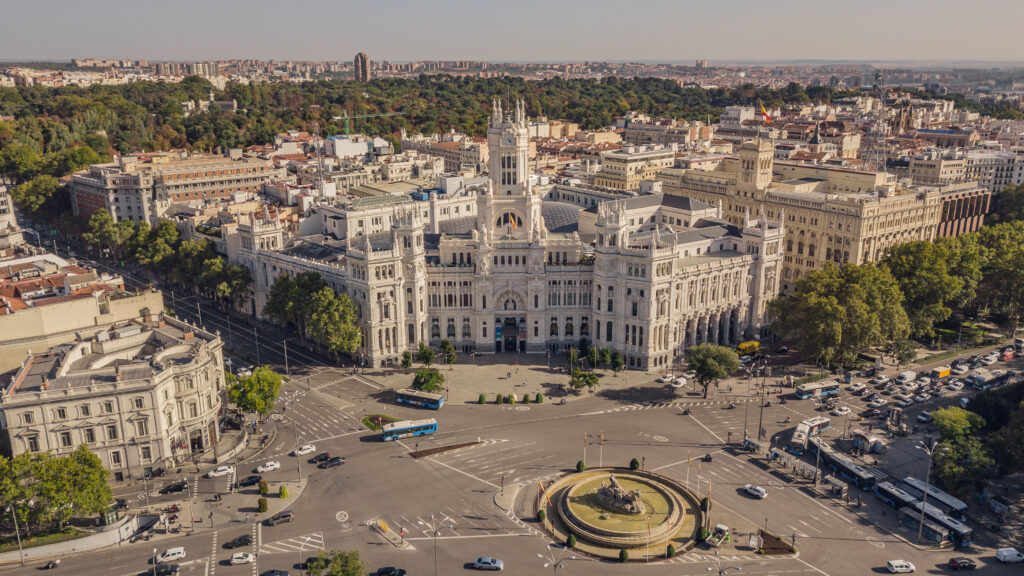
Madrid, the vibrant capital city of Spain, emerges as an ideal destination for digital nomad families searching for a blend of rich cultural heritage, excellent quality of life, and a thriving remote work community. Its mild climate, world-renowned art museums, and lush green spaces offer a stimulating environment for both work and leisure.
According to Numbeo, the average cost of living for a family of four in Madrid is estimated to be around €2,500 to €3,000 per month excluding rent.
Rent for a comfortable, family-sized apartment in a decent neighborhood averages between €900 and €1,500 per month, depending on the location and amenities. This makes Madrid a relatively affordable option for digital nomad families considering the city’s high quality of life and the array of cultural experiences it offers.
Madrid is consistently ranked as one of the safest cities in Europe for expatriates and their families. According to the latest Nomad List safety rankings, Madrid boasts a high safety score, reflecting the city’s low crime rates and efficient public safety measures. This reassuring level of security is a significant factor for digital nomad families, providing peace of mind that allows them to explore the city’s offerings and integrate into the local community with confidence. The presence of a reliable healthcare system and easy access to medical services further contribute to Madrid’s appeal as a secure destination for families living and working remotely.
Madrid’s layout and public infrastructure earn it an impressive walkability score, underscoring the city’s conveniences and the ease with which residents can access goods, services, and attractions on foot. The compact nature of Madrid’s historic center, combined with its expansive network of pedestrian-friendly streets and public squares, means that families can comfortably explore much of the city without the need for a car.
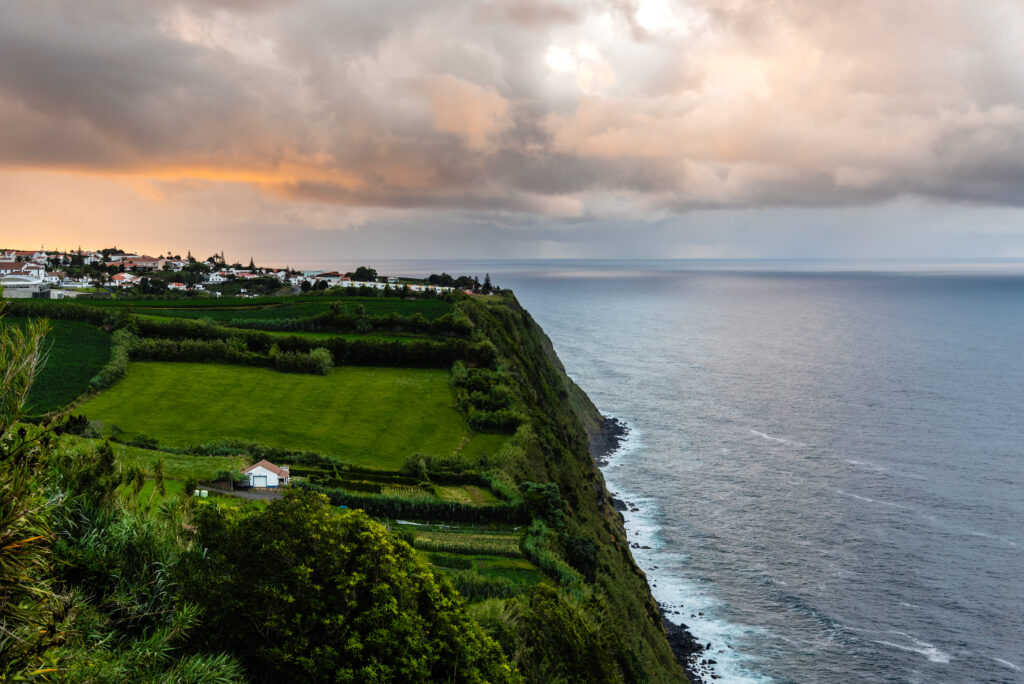
The Azores, an archipelago in the middle of the Atlantic Ocean, presents a unique blend of breathtaking landscapes, marine life, and a mild climate year-round. It’s an ideal location for digital nomad families who value nature and adventure alongside a peaceful lifestyle.
Living in the Azores is relatively economical, with the cost of living for a family of four estimated to be significantly lower than on mainland Europe. Expenses for a month can range between €1,800 to €2,400 excluding rent, while rental for a spacious family home can vary from €600 to €1,000 per month. This cost-effective living, combined with the natural beauty and serene life, makes the Azores an attractive option for families.
The Azores are noted for their low crime rate and friendly locals, making it a safe and welcoming place for families. The islands have a good healthcare system, with medical facilities readily accessible for both residents and visitors.
While the islands themselves are not highly walkable due to their rugged terrain and dispersed attractions, the towns offer walkable centers. Renting a vehicle is recommended for exploring the islands fully.
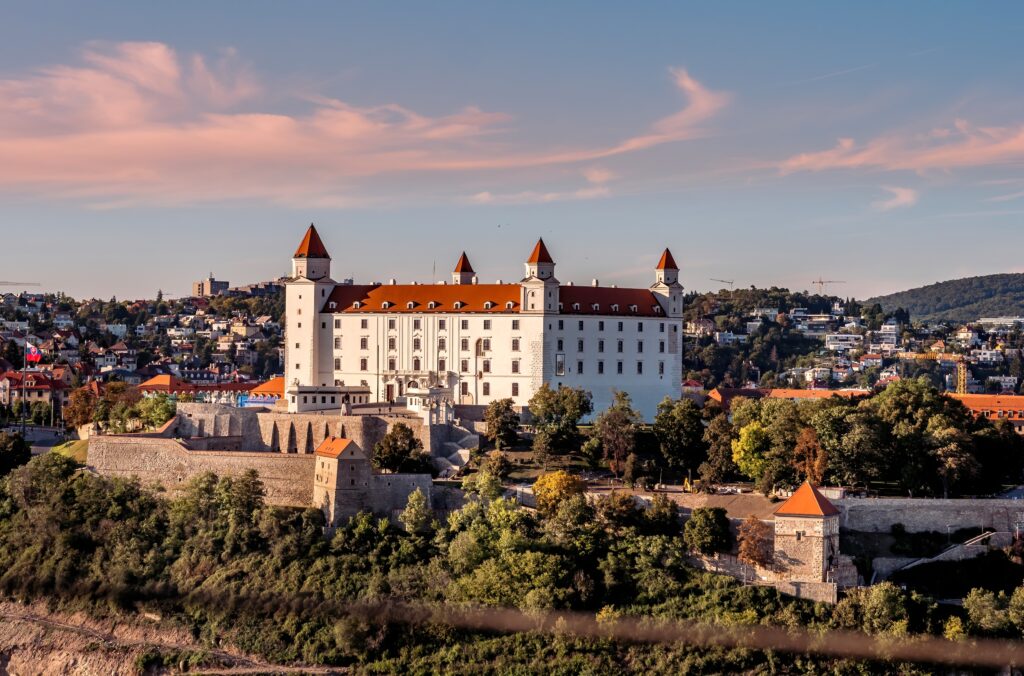
Bratislava, the capital of Slovakia, combines rich history with modern living. It’s appealing for nomad families looking for an affordable European city with a compact, walkable old town and access to nature.
The living cost for a family in Bratislava, excluding rent, falls pleasantly around €2,700 a month. The real estate market is quite reasonable, with family accommodations ranging from €700 to €1,000 per month, making Bratislava a tempting choice for digital nomad families seeking a blend of affordability and quality of life.
Bratislava is considered safe with a low crime rate. Slovakia’s healthcare system is reliable, ensuring access to quality medical care for families.
The city scores high on walkability, especially in the Old Town area. Its narrow lanes and pedestrian zones make it comfortable to explore by foot.
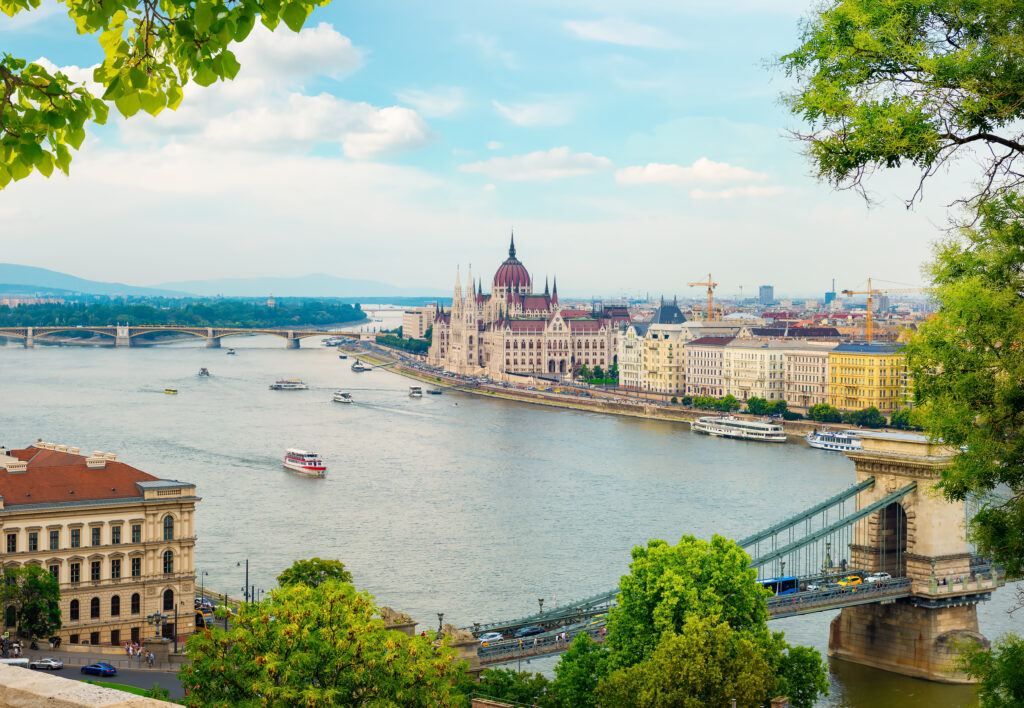
Budapest, known for its stunning architecture and thermal baths, is an attractively affordable city for digital nomads. With a vibrant cultural scene and high-quality life, it’s a favorable option for families.
The city is considered highly affordable, with a family of four monthly living costs excluding rent estimated between €2,000 and €2,500. Rent for a comfortable apartment in a good neighborhood ranges from €800 to €1,200 per month, allowing families to enjoy a high quality of life at reasonable costs.
Budapest is generally safe with a straightforward approach to personal security. Hungary’s healthcare system is competent, with several hospitals offering services in English.
The city center is pedestrian-friendly, and there is an extensive public transportation network for accessing broader areas.
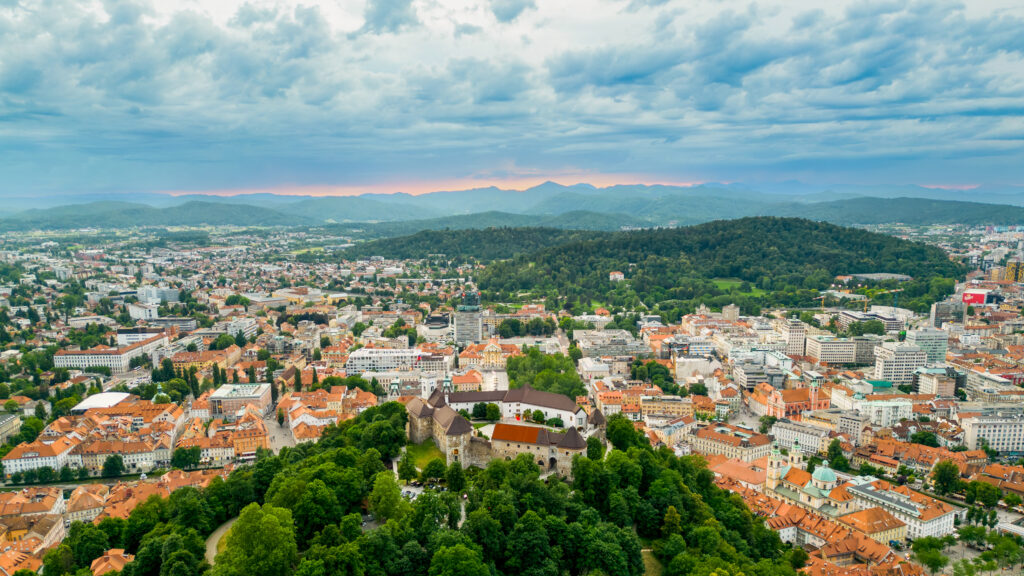
Ljubljana stands out as the green capital of Slovenia, offering an exceptional quality of life, extensive green spaces, and a focus on sustainability. It’s an ideal spot for families wanting a quiet, eco-friendly base.
For a family planning to call Ljubljana home, monthly living expenses (excluding rent) can be expected to fall between €2,100 and €2,700. The rental market provides ample options for family-sized accommodation at monthly rates from €700 to €1,100, positioning Ljubljana as an economically viable choice for digital nomad families.
Ljubljana is very safe, with a supportive local community and a high standard of living. The healthcare system is robust, providing effective medical services.
The city prides itself on its pedestrian-only city center, making it exceptionally walkable and conducive to family strolls and bicycle rides.
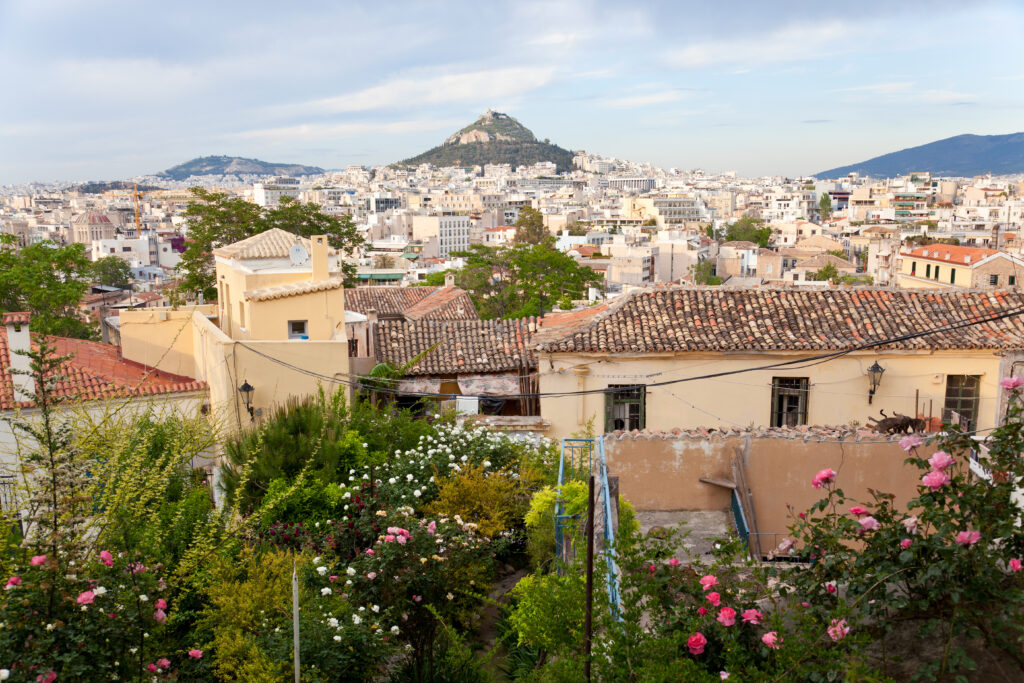
Athens combines a rich tapestry of ancient history with the vibrancy of modern living, making it an alluring destination for families living and working remotely.
The cost of living for a family in Athens is both appealing and modest, with estimates for monthly expenses (excluding rent) around €2,800. Renting a comfortable family home can cost between €800 and €1,200 per month, offering a balance between experiencing rich cultural history and managing living costs effectively.
Athens is generally safe, with particular emphasis on tourist and residential areas maintaining high security standards. Families can feel at ease exploring the city, with local authorities and the community promoting a secure environment.
The Greek capital boasts a comfortable walkability score, attributed to its blend of historical paths and modern sidewalks. The accessibility of goods, services, and iconic landmarks on foot, especially around areas like Plaka and Monastiraki, encourages families to immerse themselves in the city’s rich cultural tapestry. Athens’s initiative to pedestrianize significant parts of its historical center further boosts its appeal as a walkable city, enabling families to engage with its history and contemporary offerings in an intimately sustainable manner.